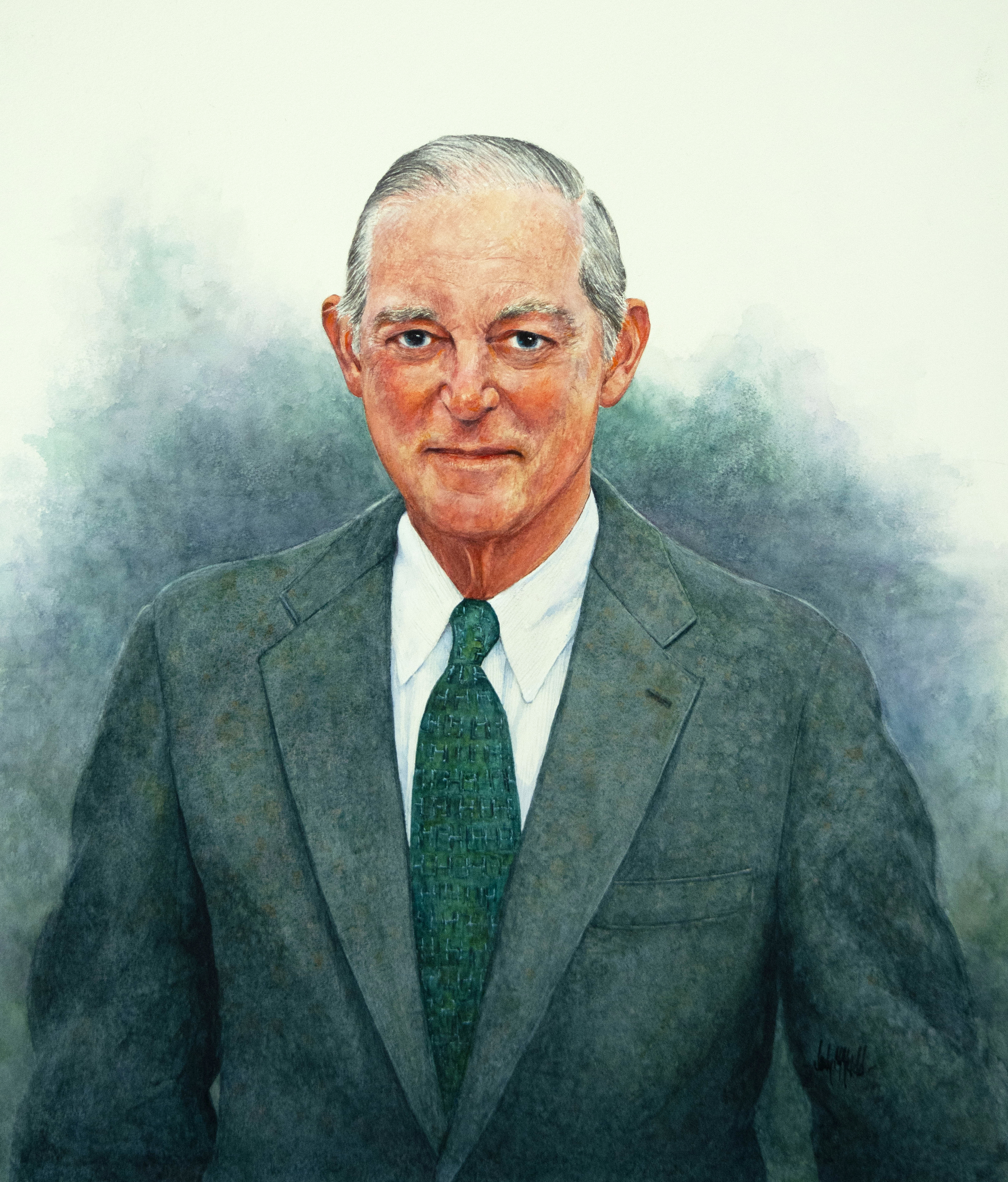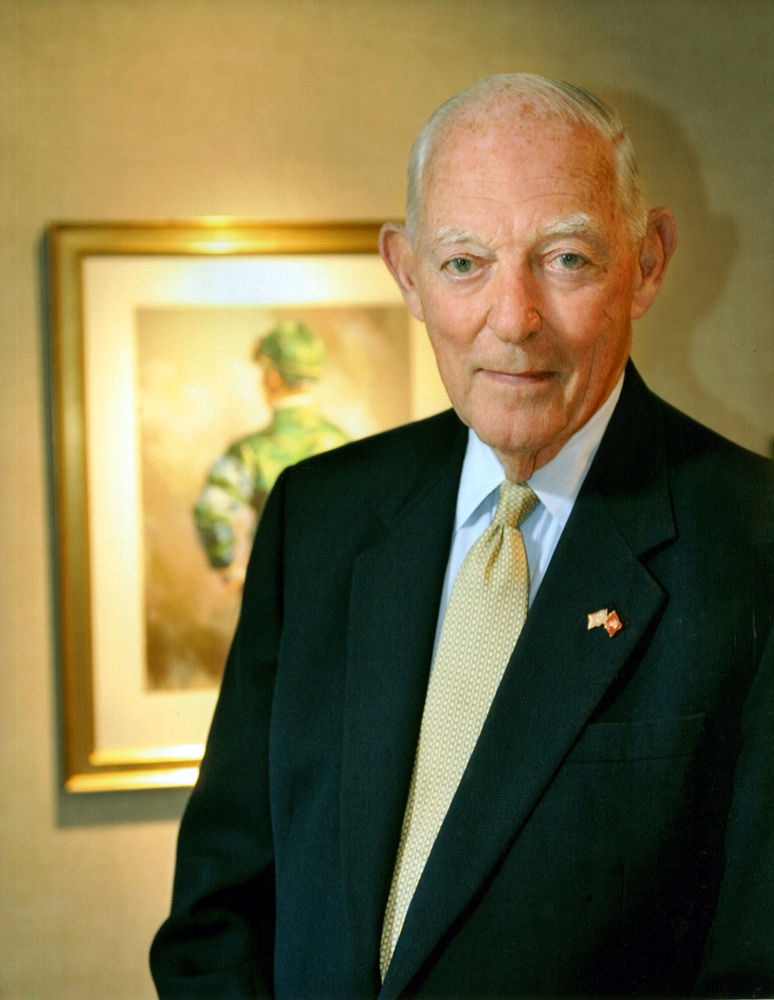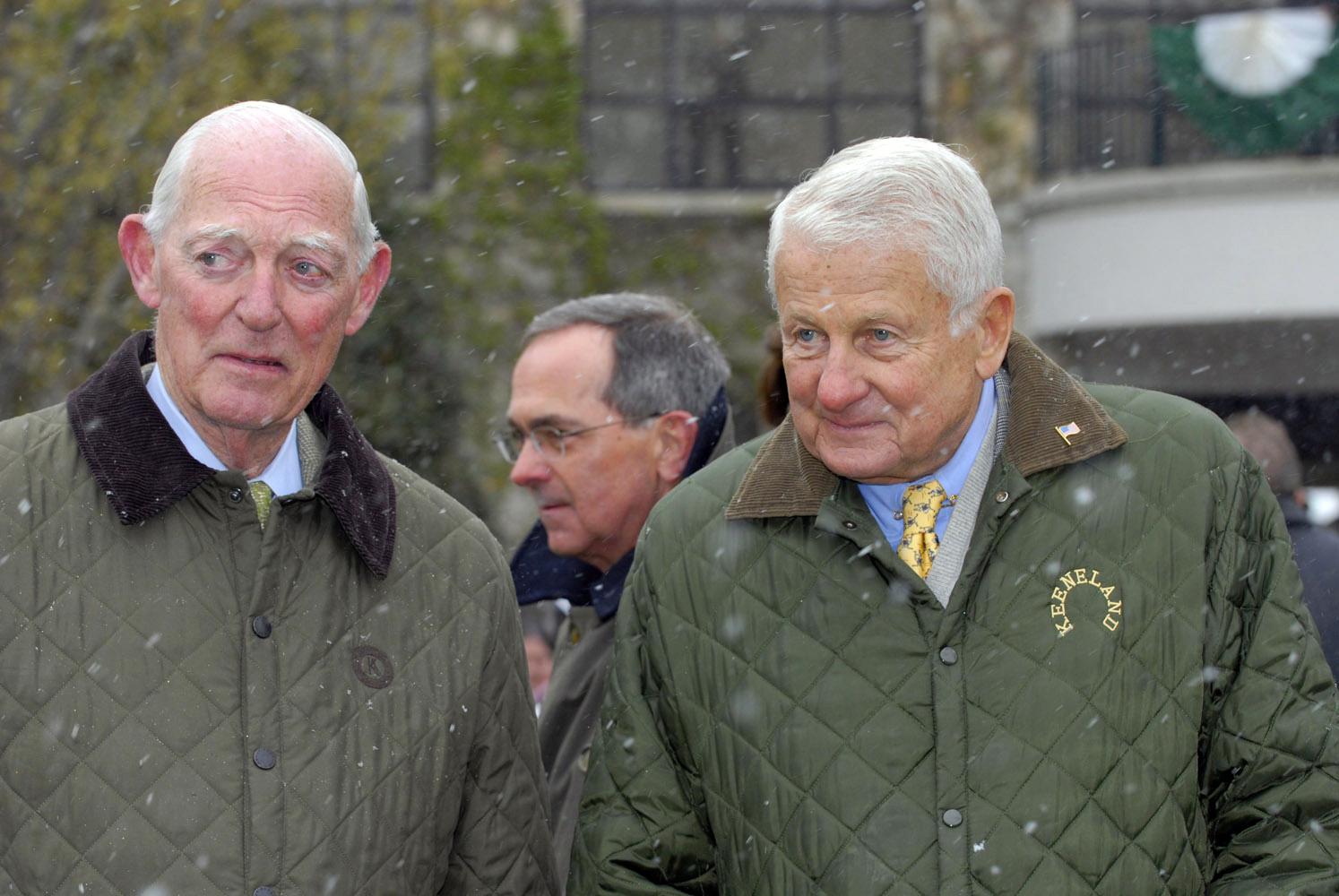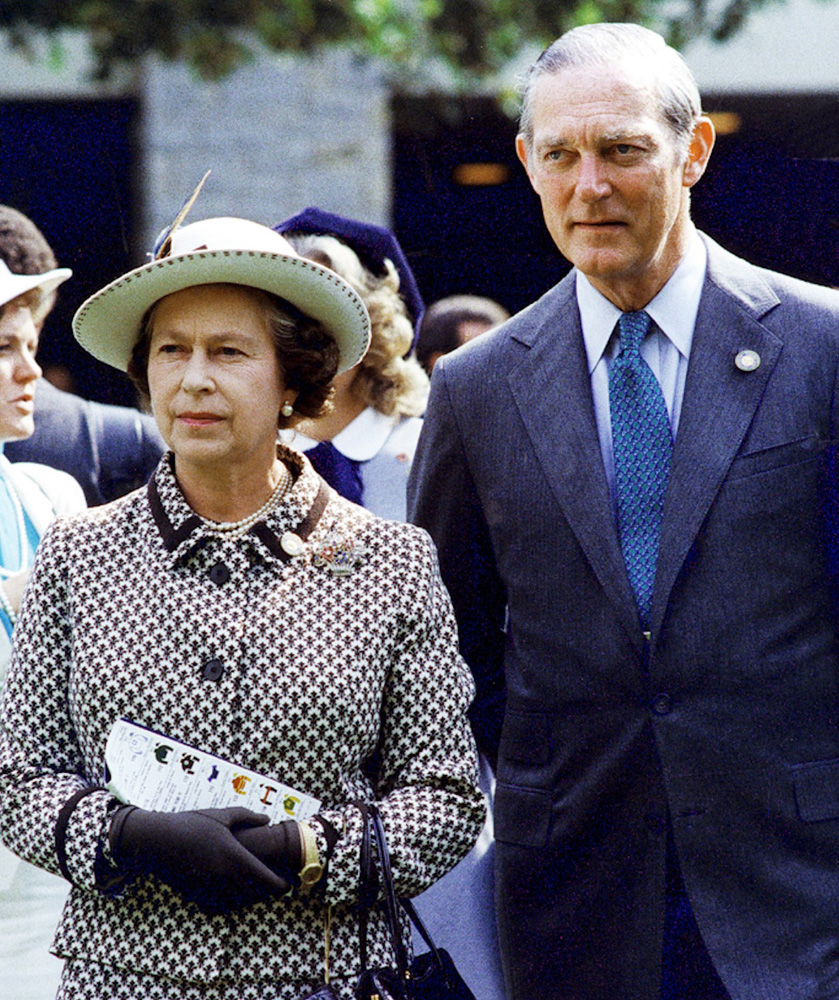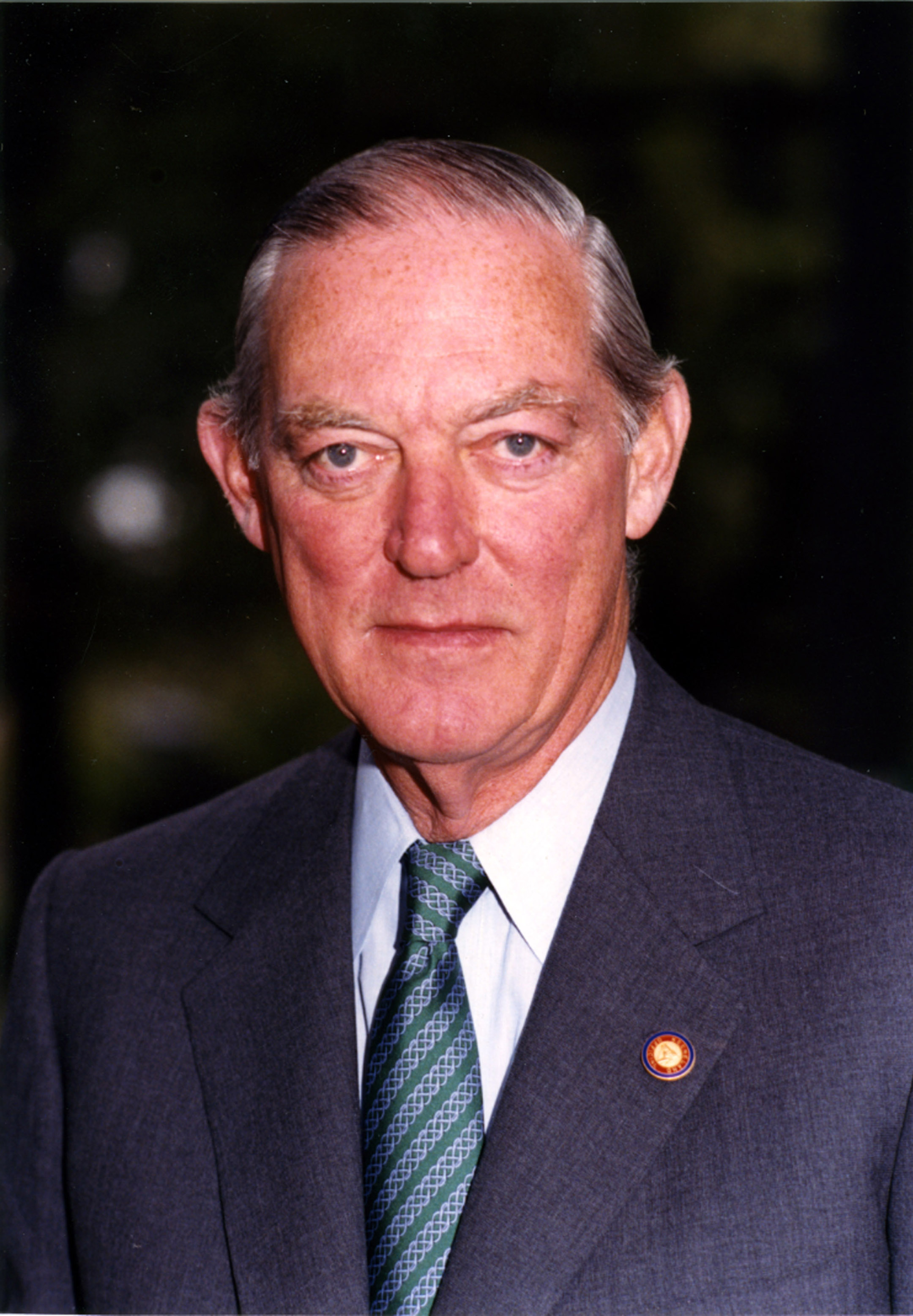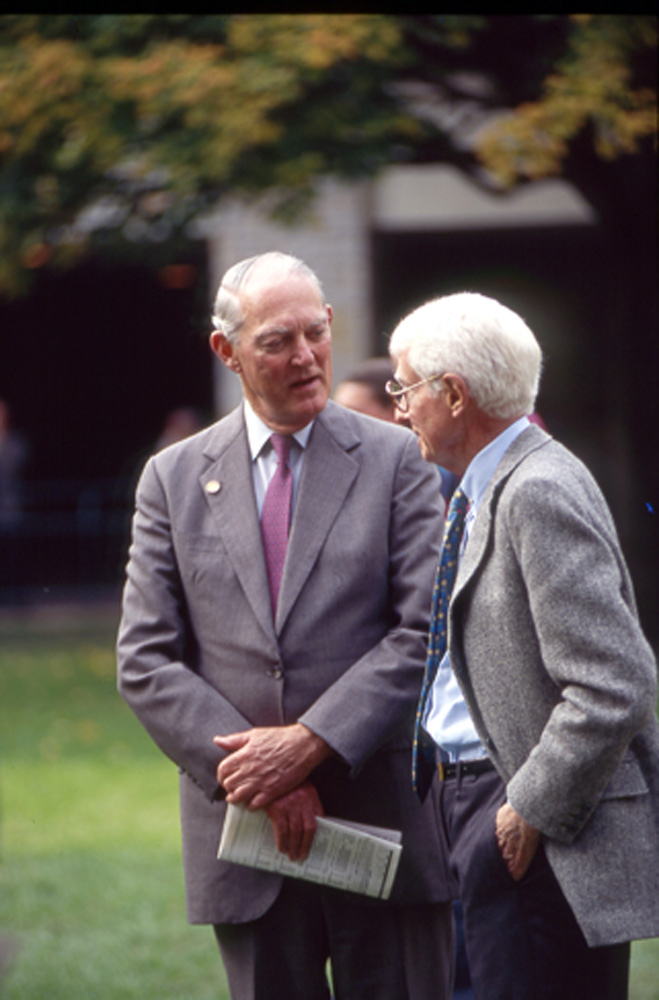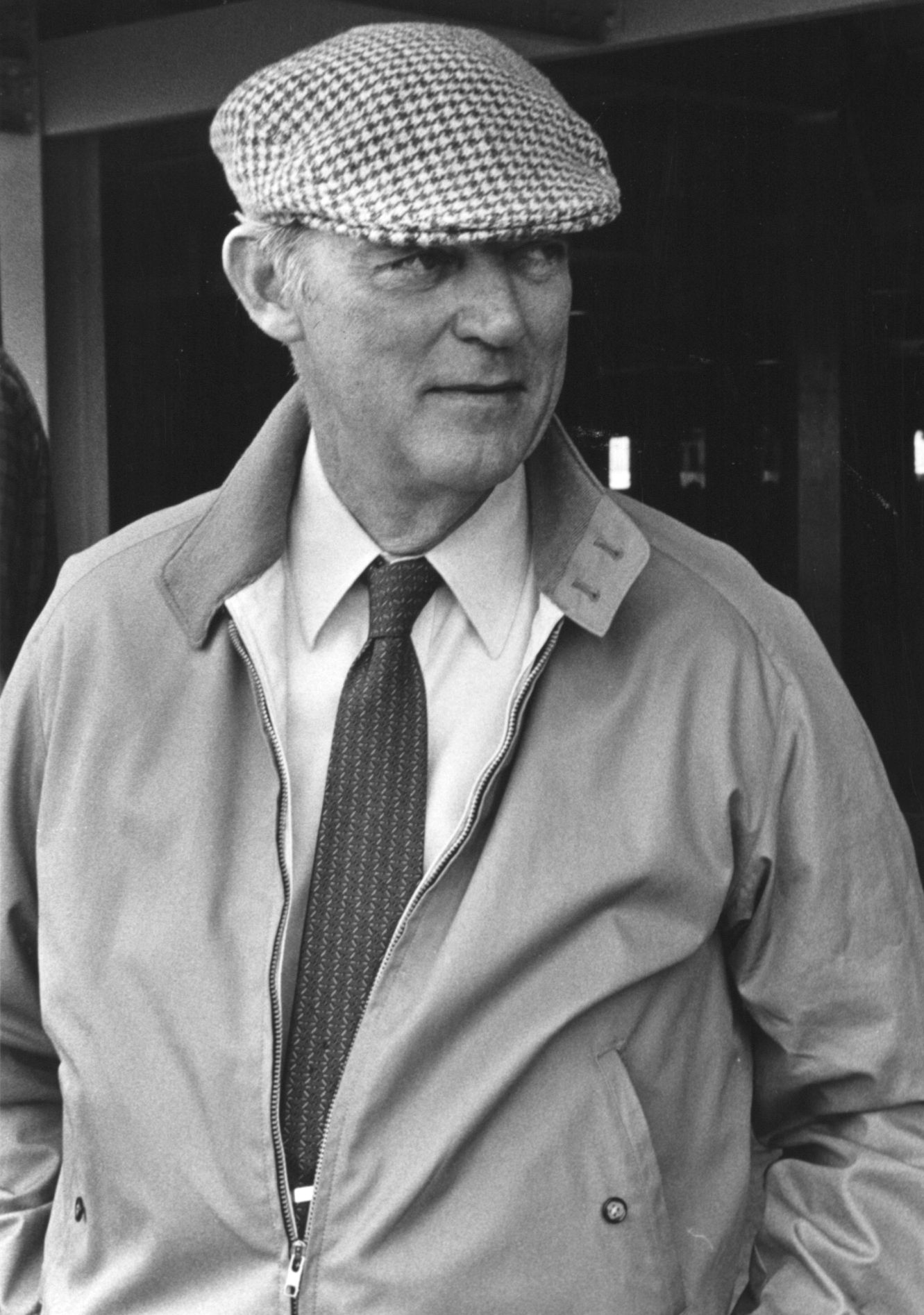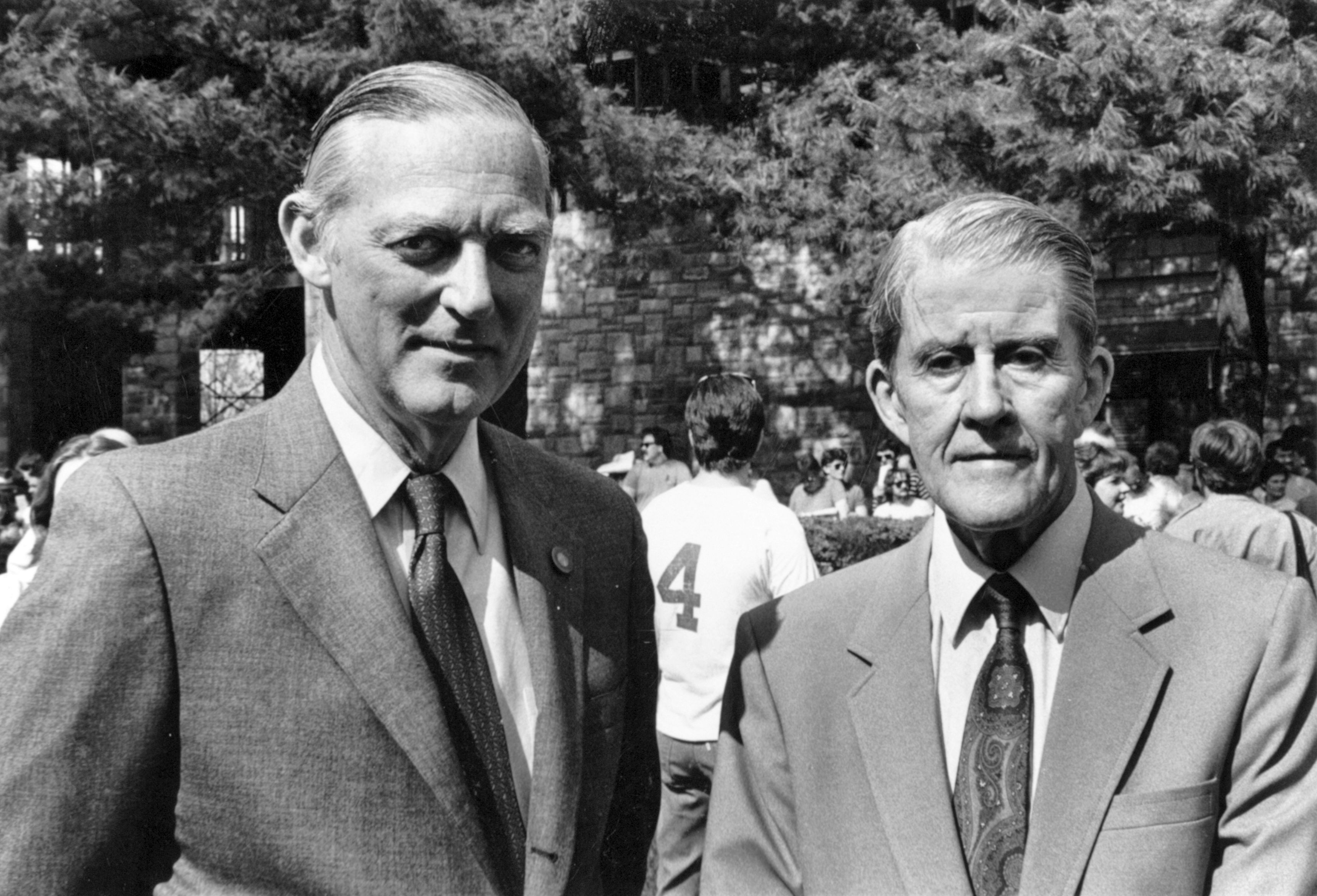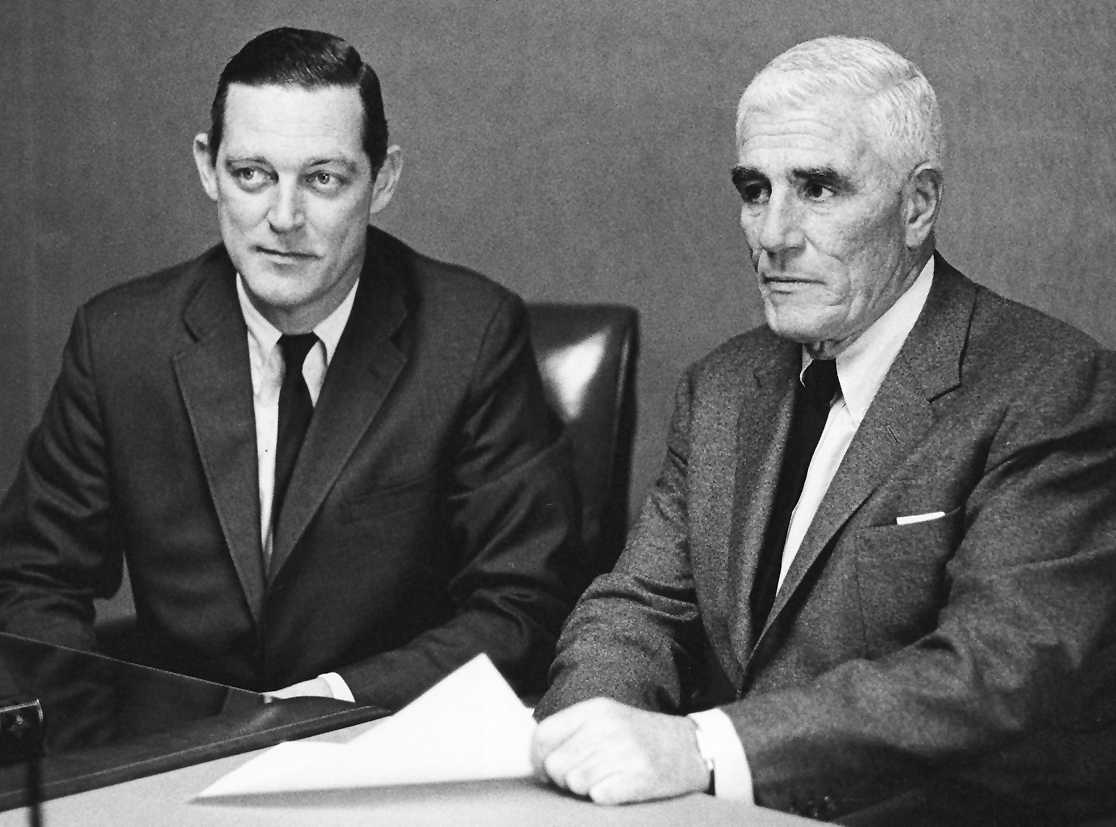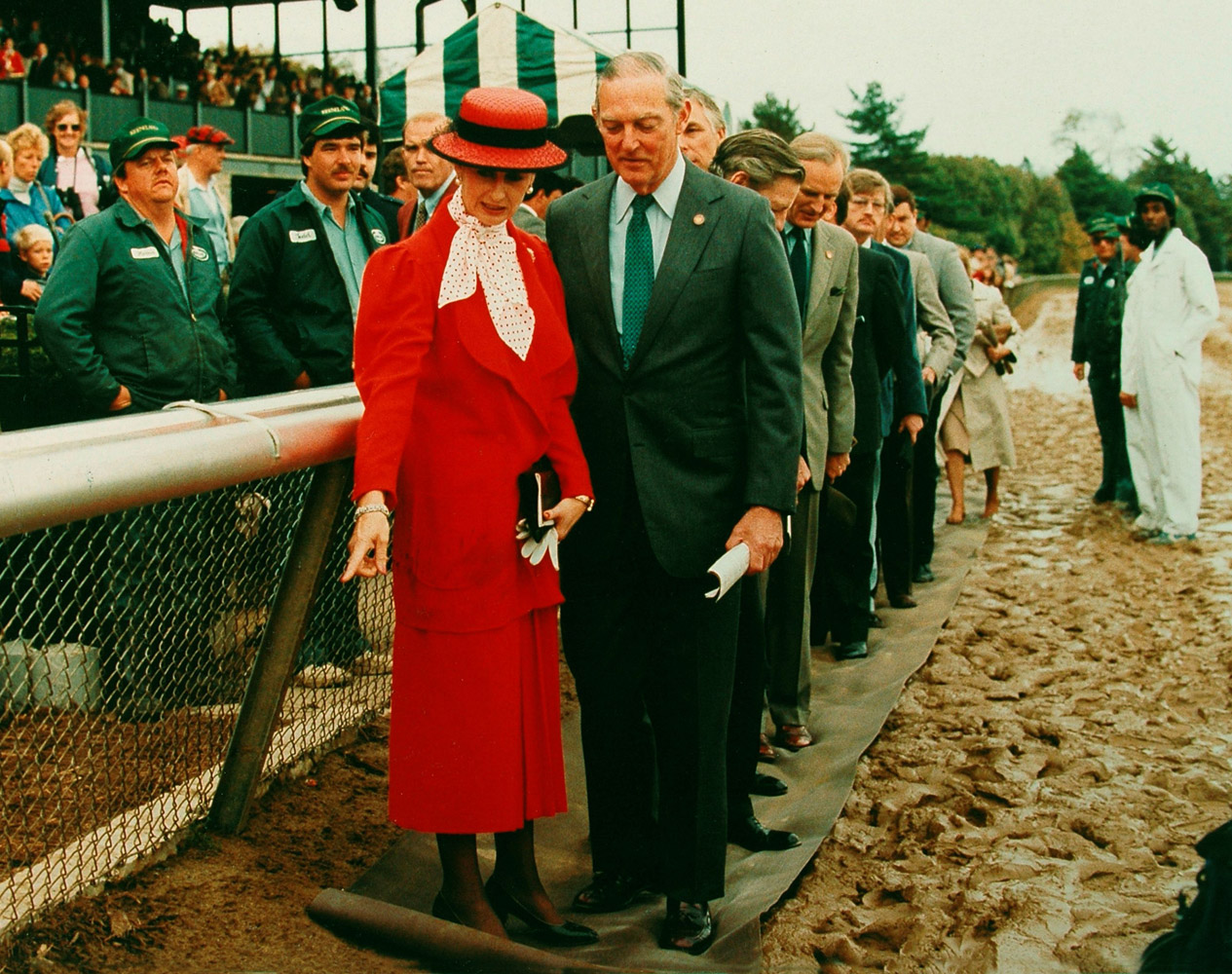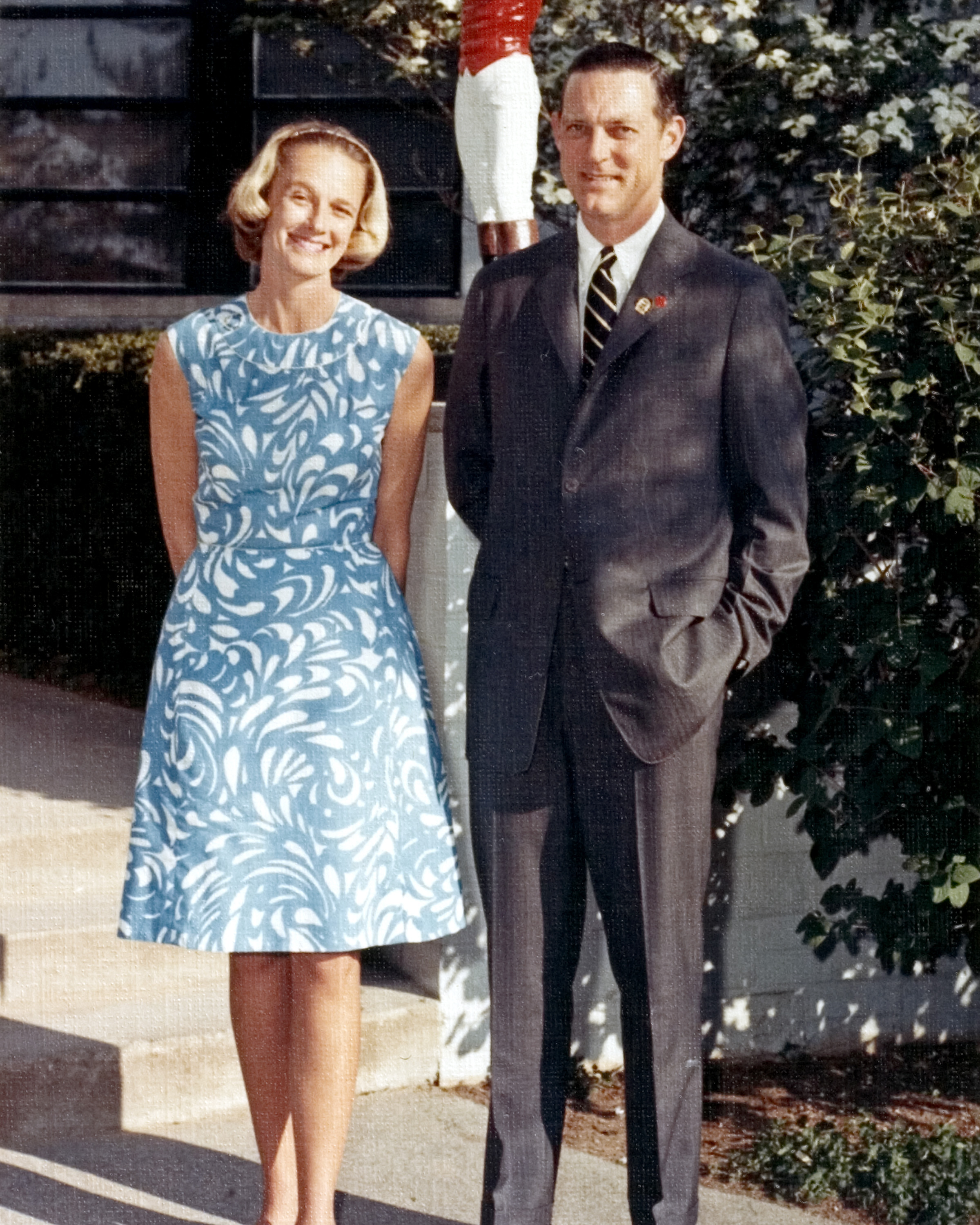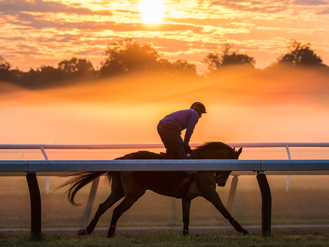James E. "Ted" Bassett III
Ted Bassett’s eventual involvement in thoroughbred racing was consistent with, but removed from, his earlier career proclivities. His father was one of the original officers of Keeneland Association and manager of Greentree Farm in Lexington, Kentucky, but Bassett’s experience as a farmhand instilled no wish for advancing along that path.
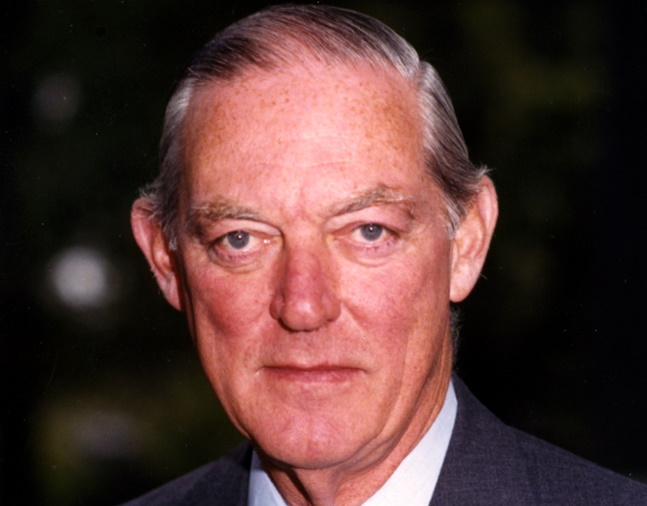
2019
Oct. 26, 1921, Lexington, Kentucky
Jan. 23, 2025, Lexington, Kentucky
Biography
Ted Bassett’s eventual involvement in thoroughbred racing was consistent with, but removed from, his earlier career proclivities. His father was one of the original officers of Keeneland Association and manager of Greentree Farm in Lexington, Kentucky, but Bassett’s experience as a farmhand instilled no wish for advancing along that path.
Born in Lexington on Oct. 26, 1921, Bassett III graduated from the Kent School in Connecticut and Yale University (1944). He then entered a milieu which stamped his character and held him in good stead for all the career directions, challenges, and opportunities which followed — he joined the Marine Corps.
“About 85 percent of Marines had a life-changing experience being in the corps,” he told Lenny Shulman of The Blood-Horse in 2006. “It’s something you never forget.”
Bassett served as an infantry officer in the Fourth Marine Regiment, Sixth Division, during World War II. Twice wounded during the Okinawa Campaign, Bassett recovered and participated in the initial landing by Allied Forces on Japan. He was awarded the Purple Heart and the Presidential Unit Citation. After the war, Bassett worked for the newsprint division of Great Northern until his personal life again dangled the racing world before him. It still was not a great fit professionally as he found from the experience of running a farm alongside A. B. Gay, a veteran horseman who was the father of Bassett’s bride, Lucy.
Bassett accepted a new direction linked to the disciplines of the Marines when he entered the law enforcement field. This led to a distinguished stint as Director of the Kentucky State Police and Deputy Commissioner of the state’s Department of Public Safety.
Racing then came calling again, and as a gentleman in his 40s, Bassett was ready to devote his efforts toward the aspects of the sport that always had appealed to him: Sportsmanship, a noble breed of horse, public service, and good business — against a backdrop of loveliness and natural beauty. He had, after all, enjoyed many years of living at historic Lanark Farm, where his wife bred thoroughbreds for the market.
Louis Lee Haggin II, son-in-law of Keeneland’s primary founder, Hal Price Headley, was Keeneland’s president when he recruited Bassett as his assistant in 1968. Two years later, Haggin stepped down and Bassett became president. Throughout the years, Bassett’s titles went from president to chairman, and then to trustee in Keeneland’s unique structure of only three trustees at the top of the chain of command. In 2006, he stepped down, but remained a trustee emeritus. His nearly four decades of distinguished and innovative service were instrumental in Keeneland’s seeming paradox of philosophies: March forward while always being shaped by its past. Keeneland’s original charter embraced the possibility of conducting sales. Under Bassett, the sale division experienced such growth factors as the company’s most prestigious yearling sale sessions, increasing in average price from $30,000 to more than a half-million dollars.
Keeneland’s original planners had stressed the sporting pleasures and pursuits of racing over the gambling aspect; but Bassett understood that good commerce must underlie the enterprise. Average daily purses rising from $35,000 to $627,000 required support from various innovations and renovations. Keeneland served its bettors via the first cash/sell betting windows among Kentucky racetracks, year-round simulcasting with its plethora of exotic wagers, and the new style racing program designed by Equibase (of which Bassett was chairman).
Meanwhile, $100 million in capital improvement during his tenure included expansion of the stands while retaining the look of stone structure amid bountiful landscaping, which retained the old feel, and creation of a modern sale pavilion to accommodate and encourage Keeneland’s ascent among the world’s great thoroughbred auction markets.
There was also installation of a turf course and safety rail, and when Queen Elizabeth II was planning to visit in 1984, a new dining room was added for the occasion. Bassett escorted Her Majesty around Keeneland on the day she presented the trophy for the first Queen Elizabeth II Challenge Cup. Articulating the symbiosis of good sport and good product, the QE II Challenge Cup became a Grade 1 race for 3-year-old fillies on turf.
Amazingly, Bassett found time to lend serious leadership to other organizations, thereby increasing by a large degree his positive impact upon the sport and business of thoroughbred racing and breeding. Foremost of his titles outside Keeneland was President of the Breeders’ Cup, a position he held from 1988 through 1996. The singular event was only four years old when Bassett was elected to the office, and for most of the next decade he was instrumental in the Breeders’ Cup’s growth and solidification of the role of providing a climactic series of races while showcasing the racing at the highest levels to the sporting public.
The range of his other offices reflect an ecumenical mindset as he made his mark on many specific segments of the industry. These included: Equine research, as president of the University of Kentucky Equine Research Foundation; Good business practices and cooperation among racetracks as president of the Thoroughbred Racing Associations; Overall health of the horse world and its relationships with state and federal government as chairman of the Kentucky State Horse Park and as a trustee of the American Horse Council; Ethical conduct of the thoroughbred registry and overall turf as a steward of The Jockey Club and as a board member of the Thoroughbred Racing and Protective Bureau; Importance of history as president of the Thoroughbred Club of America and as a trustee of the National Museum of Racing; and enhancement of international competition as Chairman of the World Racing Championship Series.
Fittingly, Bassett’s honors both within racing and outside the sport are remarkable in number. The honor as a Pillar of the Turf is but one of some two dozen awards and honors identified with racing. His others include a set of recognitions which, taken as a whole, bespeak his wide renown as ambassador of the turf: the Eclipse Award of Merit, Honored Guest of the Thoroughbred Club of America, the Lord Derby Award, and honorary membership in the Victoria Racing Club (Australia), Hong Kong Race Horse Association, and Association of Jockey Clubs of Latin America, among many others.
Bassett died at the age of 103 on Jan. 23, 2025.
Achievements
Thoroughbred Club of America Honored Guest — 1984
Eclipse Award of Merit — 1996
Lord Derby Award — 1998
Other Highlights
Keeneland Association President — 1970 to 1986
Breeders' Cup President — 1988 to 1996
Media
